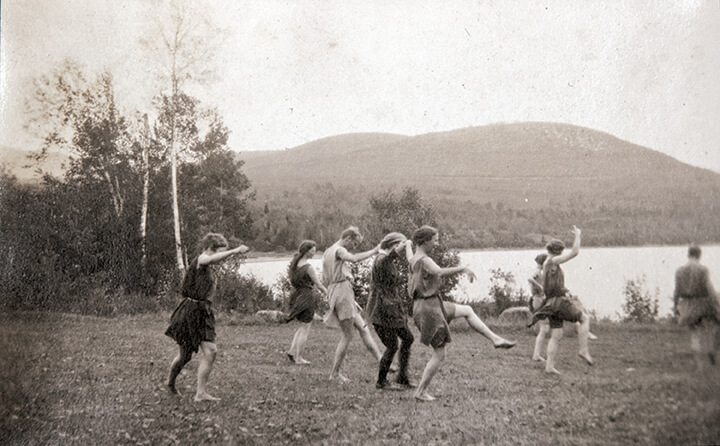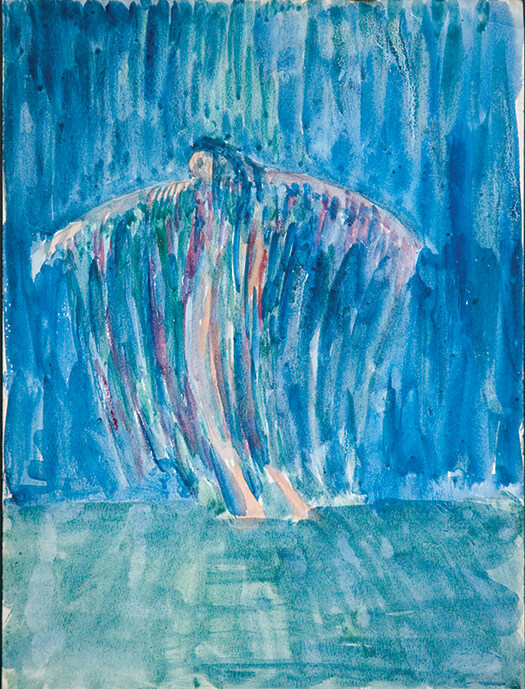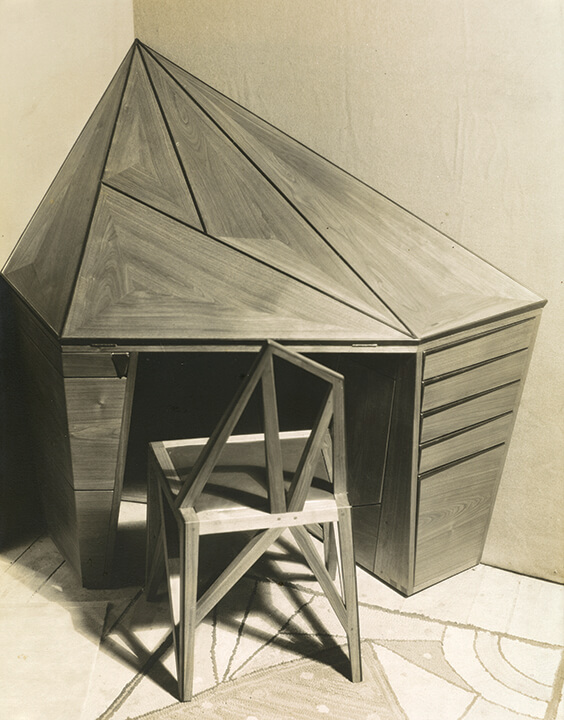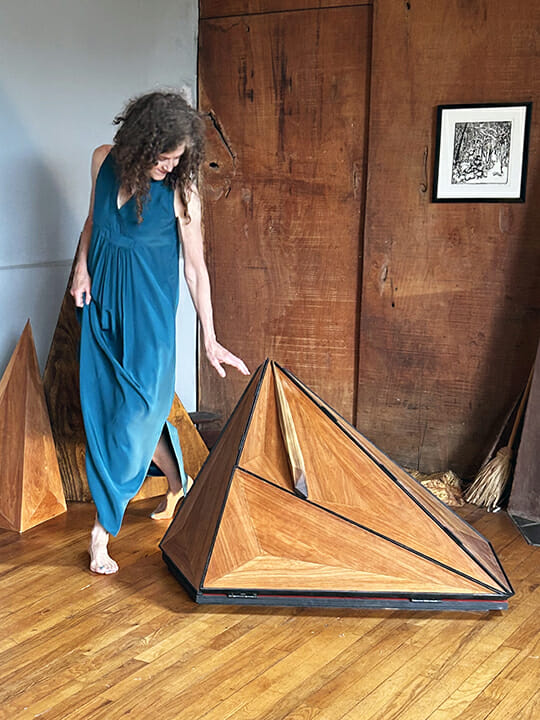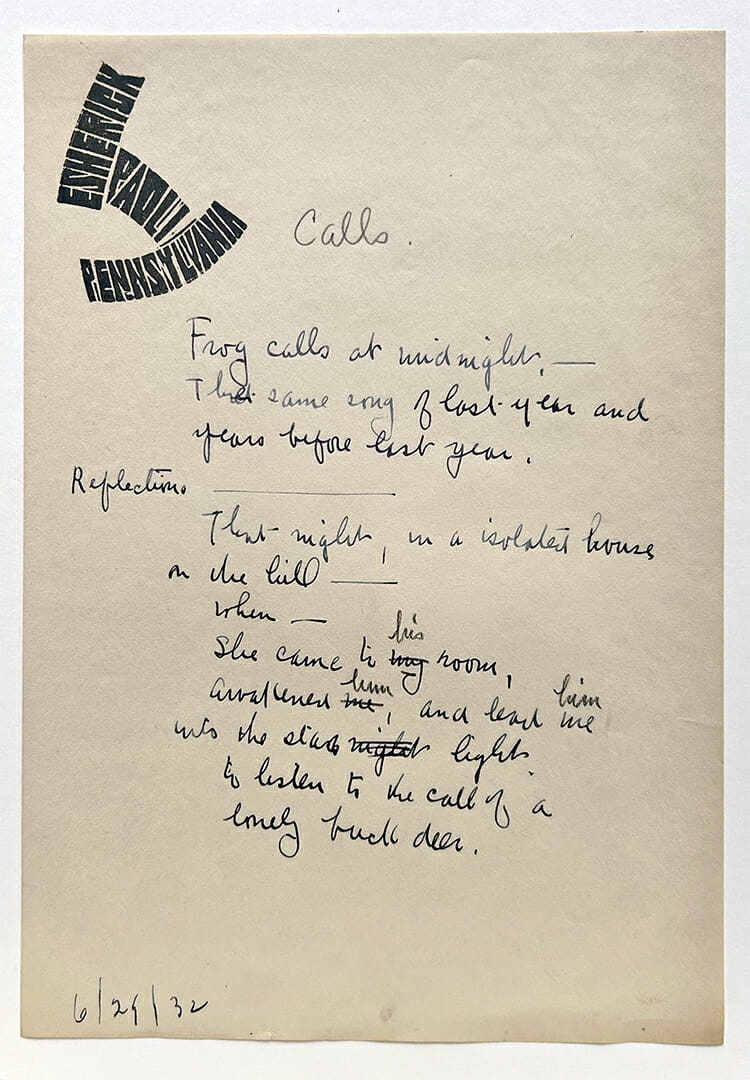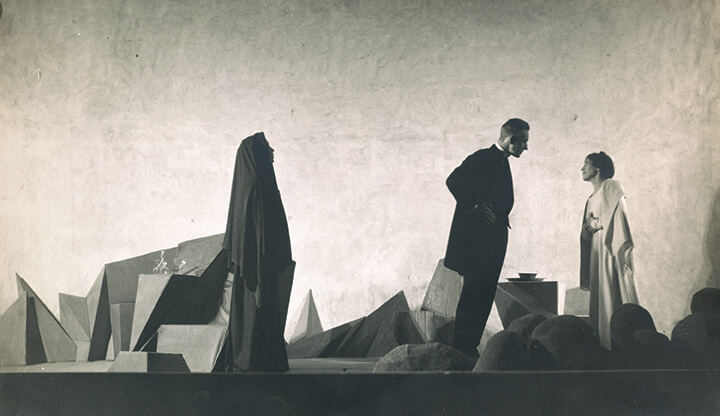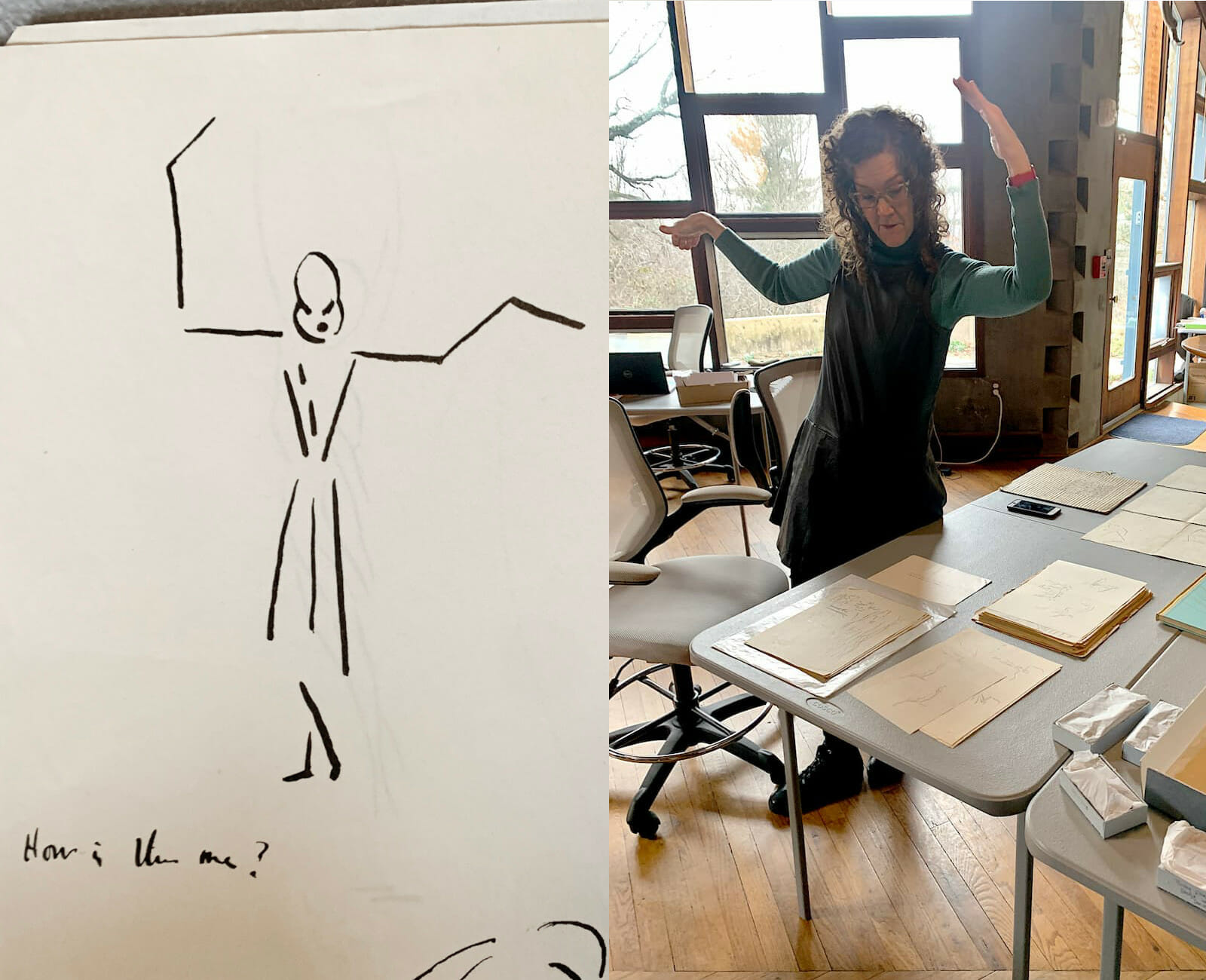Martha McDonald: The Wood is Singing in Color
September 14, 2023 – December 30, 2023
The Wood is Singing in Color is a new site-responsive performance by WEM’s 2023 Artist-in-Residence, Martha McDonald. McDonald’s work reframes our understanding of Wharton Esherick and his creative legacy. Original music, lyrics, and choreography are activated by performers wearing hand-crafted costumes amidst wooden set elements. Each of these components reflects McDonald’s research into Esherick’s creative work and influences in the 1920s and 1930s, including his expressionistic stage sets for Hedgerow Theatre, experience with avant-garde rhythmic dance, prismatic furniture, and interest in anthroposophy, a holistic philosophy developed by Rudolph Steiner.
The Wood is Singing in Color was performed on select dates in October and November, 2023. An accompanying installation in WEM’s Visitor Center features elements from McDonald’s live performance, objects and images that influenced her in the process of developing this new work, and video excerpts from the live performance alongside an interview with the artist. Our Visitor Center is open during our current tour hours (Thurs – Sun 10am – 3pm). Please note, guests wishing to enter the Studio must make advance reservations for a tour.
Martha McDonald, The Wood is Singing in Color. Photo by Brooke Sietinsons, courtesy of the artist.
Over the course of a year, McDonald conducted a series of residency stays on WEM’s campus to explore the museum’s collections and archives, including boxes of Esherick’s watercolors, sketches, and letters, as well as photographs and ephemera. During these visits, McDonald was the first artist-in-residence to stay overnight in Esherick’s family farmhouse Sunekrest, part of WEM’s larger campus, so that she might experience the landscape as embodied, sensory research. McDonald’s exploration also extended beyond WEM’s campus. She and collaborator Brooke Sietinsons traveled to the anthroposophical community of Spring Valley, New York to learn elements of eurythmy, Steiner’s expressive movement art that seeks to make speech and music visible through gesture and color. McDonald worked with a series of collaborators, including musicians Sietinsons and Miriam Goldberg, fashion designer Dana Meyer, and woodworker Casey Chew to integrate all of this inquiry into The Wood is Singing in Color. Additional elements were commissioned from woodworker Larissa Huff.
About the Artist
Martha McDonald makes performances and installations that feature handcrafted costumes and objects, which she activates through movement and song. She often develops site-specific interventions grounded in deep research into collections, archives, and historic material practices; and in response to the physical site. McDonald has developed work in historic house museums, botanic gardens, a Victorian cemetery, a construction waste recycling facility, and a small boat journeying down a river.
Her work has shown internationally at Brotfabrik, Berlin; Linden Centre for Contemporary Arts, Melbourne, Australia; Elizabeth Bay House, Sydney; the Tamworth Textile Triennial, which traveled throughout Australia; and Aberdeen Art Gallery & Museum, Aberdeen, Scotland. Nationally, her work has been shown at the Smithsonian National Portrait Gallery, Black Mountain College Museum + Arts Center, the John Michael Kohler Arts Center, Evergreen Museum & Library at Johns Hopkins University, RAIR (Recycled Artists in Residence), The Museum of American Glass at WheatonArts, The Woodlands cemetery, and The Rosenbach Museum & Library. She received an MFA from Monash University, Melbourne, Australia. McDonald lives and works in Philadelphia, PA.
Martha McDonald, The Wood is Singing in Color. Photo by Brooke Sietinsons, courtesy of the artist.
Performance Excerpt and Interview
The Wood is Singing in Color, 2023
Performance excerpt and interview
Performers: Miriam Goldberg, Martha McDonald, Brooke Sietinsons
Filmed and edited by Brooke Sietinsons
Costumes by Dana Meyer and Martha McDonald
Set elements by Casey Chew
Triangular instruments by Larissa Huff
Residency & Research
The Wood is Singing in Color marks the first live performance by a WEM Artist-in-Residence, a program the museum began in 2021 to invite meaningful conversation between contemporary makers and the museum’s collections. To develop her piece, McDonald conducted a series of residency stays on WEM’s campus to explore the collections and archives, which form the foundation of her culminating performance. A selection of the materials from which McDonald drew inspiration can be seen below.
“Before I started researching, I had a very simplified idea of Esherick as this heroic American woodworker. Then I saw a photo of him in a diaphanous Greek shift, dancing with a group of women on the lawn of a dance camp in the Adirondacks in 1920 and I thought, ‘oh, now this is exciting!’ I felt like I was peeling back the layers of the Esherick onion.”
“Esherick isn’t known as a writer, but I was struck by how lyrical his notes to himself were. Many were meditations on the natural world around his studio—the changing colors of leaves in Autumn, ‘the call of a lonely buck deer.’ Others explored self-doubt and isolation. They seemed to call out to be song lyrics.”

